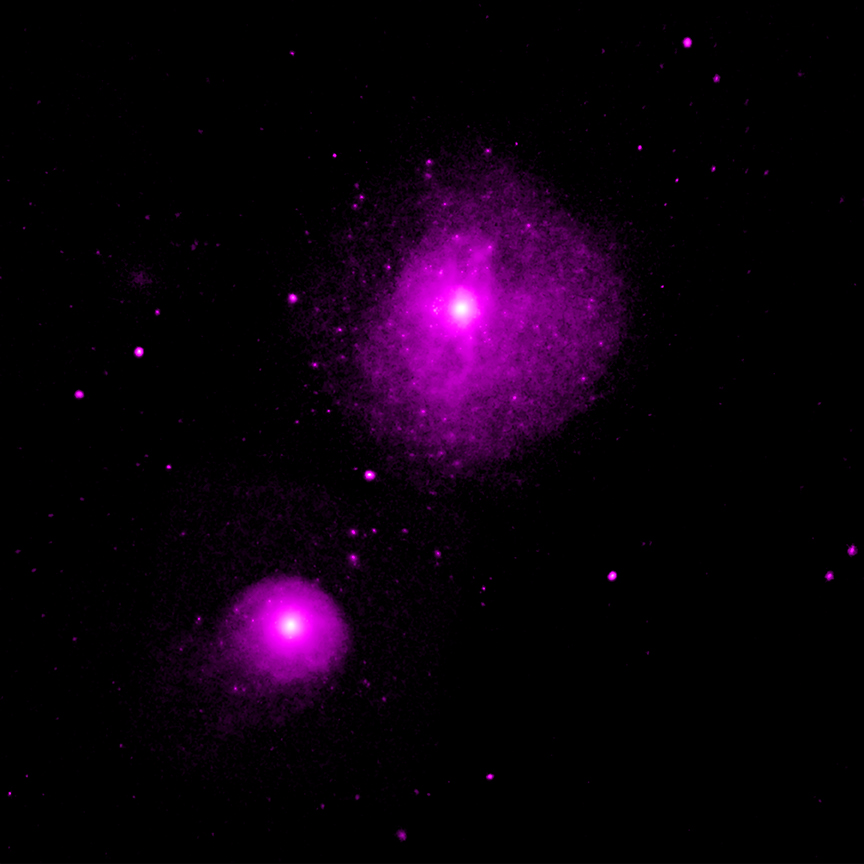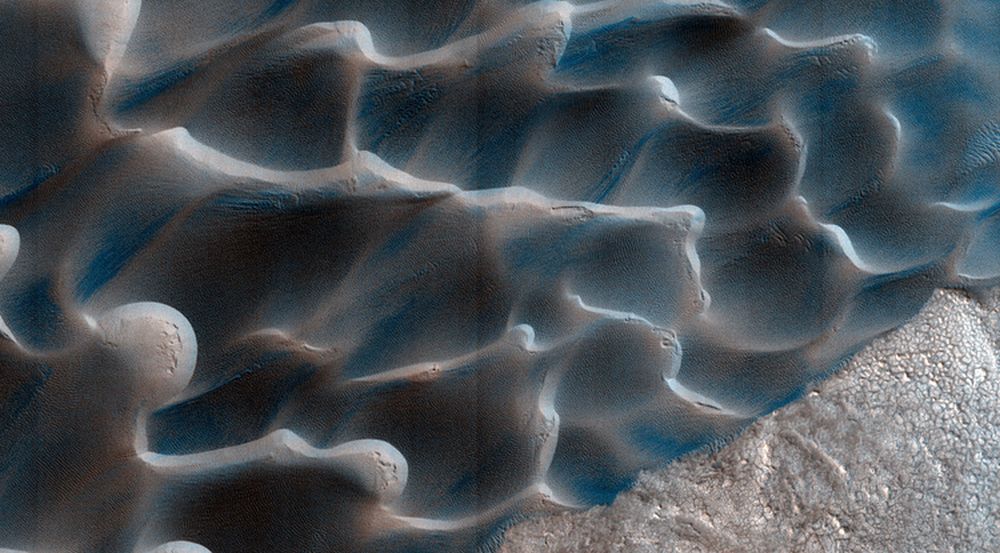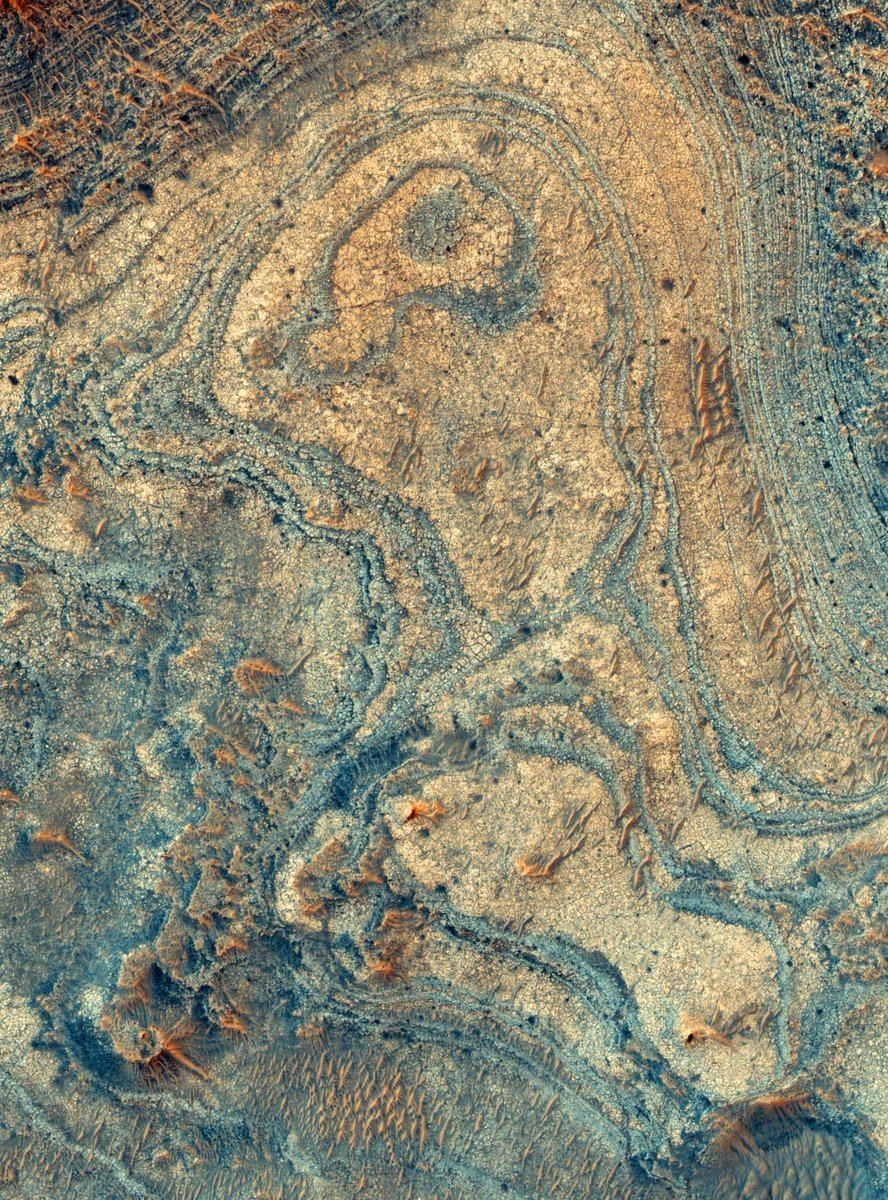A rogue star is one that has escaped the gravitational pull of its home galaxy. These stars drift through intergalactic space, and so are sometimes called intergalactic stars. Sometimes, when a rogue star is ejected from its galaxy, it drags its binary pair along for the ride.
Continue reading “Astronomers are Finding Binary Pairs of Stars Thrown out of Galaxies Together”Different Conditions From Earth Drive the Movement of Sand Dunes on Mars
Mars is a sandy planet and the HiRISE camera on the Mars Reconnaissance Orbiter (MRO) has given us tons of beautiful pictures of Martian sand dunes. But Mars’ dunes are much different than dunes here on Earth. Their movement is governed by different factors than Earth dunes.
Continue reading “Different Conditions From Earth Drive the Movement of Sand Dunes on Mars”This Strange Feature on Mars was Probably the Result of an Ancient Volcanic Explosion
A strange feature on the surface of Mars has kept scientists guessing about its origin. It’s a surface deposit of a mineral which is more common in the interiors of planets. A new study shows that this interior mineral was probably brought to the surface by an ancient explosive volcano.
Continue reading “This Strange Feature on Mars was Probably the Result of an Ancient Volcanic Explosion”NASA’s Long-Term Climate Predictions have Proven to be Very Accurate, Within 1/20th of a Degree Celsius

There are a handful of major science institutions around the world that keep track of the Earth’s temperature. They all clearly show that the world’s temperature has risen in the past few decades. One of those institutions is NASA.
Continue reading “NASA’s Long-Term Climate Predictions have Proven to be Very Accurate, Within 1/20th of a Degree Celsius”18 – Yes, 18 – New Earth-sized Exoplanets have been Found in Kepler’s Data

Scientists working with data from the Kepler mission have discovered an additional 18 Earth-sized worlds. The team used a newer, more stringent method of combing through the data to find these planets. Among the 18 is the smallest exoplanet ever found.
Continue reading “18 – Yes, 18 – New Earth-sized Exoplanets have been Found in Kepler’s Data”The Collision that Created the Moon Might Have Also Brought Water to the Early Earth

Scientists at the University of Munster have discovered that Earth got its water from a collision with Theia. Theia was the ancient body that collided with Earth and formed the Moon. Their discovery shows that Earth’s water is much more ancient than previously thought.
Continue reading “The Collision that Created the Moon Might Have Also Brought Water to the Early Earth”
Bizarre Star Could be the Result of Two White Dwarfs Merging Together
Stars live and die on epic time scales. Tens of millions of years, hundreds of millions of years, even billions of years or longer. Maybe the only thing that surpasses that epicness is when two dead stars join together and come back to life.
Continue reading “Bizarre Star Could be the Result of Two White Dwarfs Merging Together”NASA has Picked the Companies That’ll Help Build its Lunar Landers
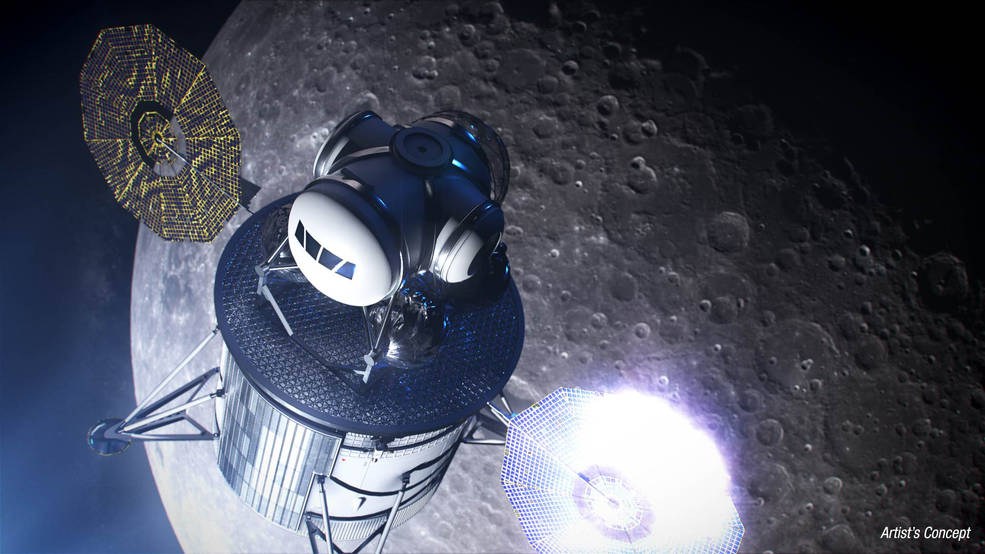
NASA has chosen 11 American companies to help them build the next lunar landers that will carry humans to the surface of the Moon. The 11 companies will conduct studies and work on prototype landers in the coming years. It’s all part of NASA’s Artemis mission, and the mission’s 2024 date with the surface of the Moon.
Continue reading “NASA has Picked the Companies That’ll Help Build its Lunar Landers”Planetary Society’s Light Sail 2 is Set to Launch on a Falcon Heavy Rocket Next Month
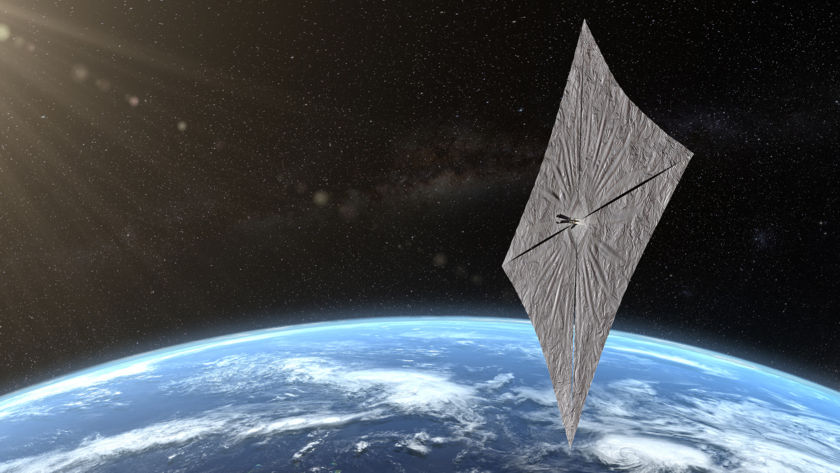
The Planetary Society is going to launch their LightSail 2 CubeSat next month. LightSail 2 is a test mission designed to study the feasibility of using sunlight for propulsion. The small satellite will use the pressure of sunlight on its solar sails to propel its way to a higher orbit.
Continue reading “Planetary Society’s Light Sail 2 is Set to Launch on a Falcon Heavy Rocket Next Month”Small, Tough Planets can Survive the Death of Their Star

Sad fact of the Universe is that all stars will die, eventually. And when they do, what happens to their babies? Usually, the prognosis for the planets around a dying star is not good, but a new study says some might in fact survive.
A group of astronomers have taken a closer look at what happens when stars, like our Sun for instance, become white dwarfs late in their lives. As it turns out, denser planets like Earth might survive the event. But, only if they’re the right distance away.
Continue reading “Small, Tough Planets can Survive the Death of Their Star”
